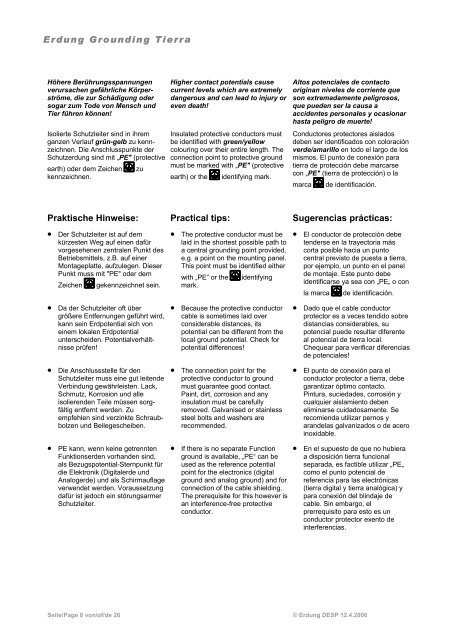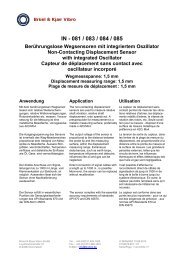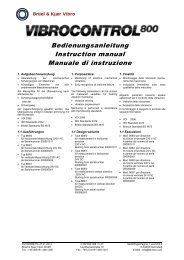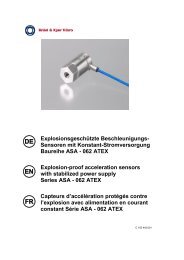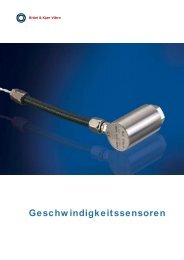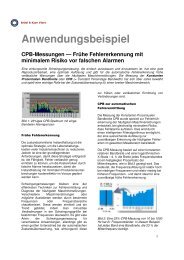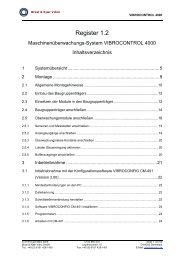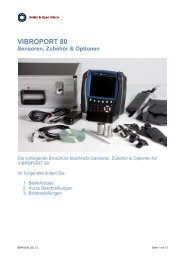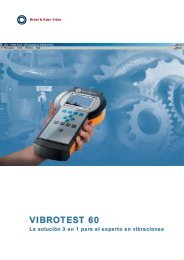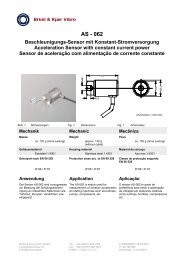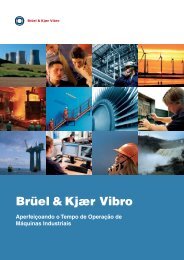Allgemeine Erdungsempfehlung General grounding ...
Allgemeine Erdungsempfehlung General grounding ...
Allgemeine Erdungsempfehlung General grounding ...
You also want an ePaper? Increase the reach of your titles
YUMPU automatically turns print PDFs into web optimized ePapers that Google loves.
Erdung Grounding Tierra<br />
Höhere Berührungsspannungen<br />
verursachen gefährliche Körperströme,<br />
die zur Schädigung oder<br />
sogar zum Tode von Mensch und<br />
Tier führen können!<br />
Isolierte Schutzleiter sind in ihrem<br />
ganzen Verlauf grün-gelb zu kennzeichnen.<br />
Die Anschlusspunkte der<br />
Schutzerdung sind mit „PE" (protective<br />
earth) oder dem Zeichen zu<br />
kennzeichnen.<br />
Higher contact potentials cause<br />
current levels which are extremely<br />
dangerous and can lead to injury or<br />
even death!<br />
Insulated protective conductors must<br />
be identified with green/yellow<br />
colouring over their entire length. The<br />
connection point to protective ground<br />
must be marked with „PE" (protective<br />
earth) or the identifying mark.<br />
Altos potenciales de contacto<br />
originan niveles de corriente que<br />
son extremadamente peligrosos,<br />
que pueden ser la causa a<br />
accidentes personales y ocasionar<br />
hasta peligro de muerte!<br />
Conductores protectores aislados<br />
deben ser identificados con coloración<br />
verde/amarillo en todo el largo de los<br />
mismos. El punto de conexión para<br />
tierra de protección debe marcarse<br />
con „PE" (tierra de protección) o la<br />
marca de identificación.<br />
Praktische Hinweise: Practical tips: Sugerencias prácticas:<br />
• Der Schutzleiter ist auf dem<br />
kürzesten Weg auf einen dafür<br />
vorgesehenen zentralen Punkt des<br />
Betriebsmittels, z.B. auf einer<br />
Montageplatte, aufzulegen. Dieser<br />
Punkt muss mit "PE" oder dem<br />
Zeichen gekennzeichnet sein.<br />
• Da der Schutzleiter oft über<br />
größere Entfernungen geführt wird,<br />
kann sein Erdpotential sich von<br />
einem lokalen Erdpotential<br />
unterscheiden. Potentialverhältnisse<br />
prüfen!<br />
• Die Anschlussstelle für den<br />
Schutzleiter muss eine gut leitende<br />
Verbindung gewährleisten. Lack,<br />
Schmutz, Korrosion und alle<br />
isolierenden Teile müssen sorgfältig<br />
entfernt werden. Zu<br />
empfehlen sind verzinkte Schraubbolzen<br />
und Beilegescheiben.<br />
• PE kann, wenn keine getrennten<br />
Funktionserden vorhanden sind,<br />
als Bezugspotential-Sternpunkt für<br />
die Elektronik (Digitalerde und<br />
Analogerde) und als Schirmauflage<br />
verwendet werden. Voraussetzung<br />
dafür ist jedoch ein störungsarmer<br />
Schutzleiter.<br />
• The protective conductor must be<br />
laid in the shortest possible path to<br />
a central <strong>grounding</strong> point provided,<br />
e.g. a point on the mounting panel.<br />
This point must be identified either<br />
with „PE“ or the identifying<br />
mark.<br />
• Because the protective conductor<br />
cable is sometimes laid over<br />
considerable distances, its<br />
potential can be different from the<br />
local ground potential. Check for<br />
potential differences!<br />
• The connection point for the<br />
protective conductor to ground<br />
must guarantee good contact.<br />
Paint, dirt, corrosion and any<br />
insulation must be carefully<br />
removed. Galvanised or stainless<br />
steel bolts and washers are<br />
recommended.<br />
• If there is no separate Function<br />
ground is available, „PE“ can be<br />
used as the reference potential<br />
point for the electronics (digital<br />
ground and analog ground) and for<br />
connection of the cable shielding.<br />
The prerequisite for this however is<br />
an interference-free protective<br />
conductor.<br />
• El conductor de protección debe<br />
tenderse en la trayectoria más<br />
corta posible hacia un punto<br />
central previsto de puesta a tierra,<br />
por ejemplo, un punto en el panel<br />
de montaje. Este punto debe<br />
identificarse ya sea con „PE„ o con<br />
la marca de identificación.<br />
• Dado que el cable conductor<br />
protector es a veces tendido sobre<br />
distancias considerables, su<br />
potencial puede resultar diferente<br />
al potencial de tierra local.<br />
Chequear para verificar diferencias<br />
de potenciales!<br />
• El punto de conexión para el<br />
conductor protector a tierra, debe<br />
garantizar óptimo contacto.<br />
Pintura, suciedades, corrosión y<br />
cualquier aislamiento deben<br />
eliminarse cuidadosamente. Se<br />
recomienda utilizar pernos y<br />
arandelas galvanizados o de acero<br />
inoxidable.<br />
• En el supuesto de que no hubiera<br />
a disposición tierra funcional<br />
separada, es factible utilizar „PE„<br />
como el punto potencial de<br />
referencia para las electrónicas<br />
(tierra digital y tierra analógica) y<br />
para conexión del blindaje de<br />
cable. Sin embargo, el<br />
prerrequisito para esto es un<br />
conductor protector exento de<br />
interferencias.<br />
Seite/Page 8 von/of/de 26 © Erdung DESP 12.4.2006


